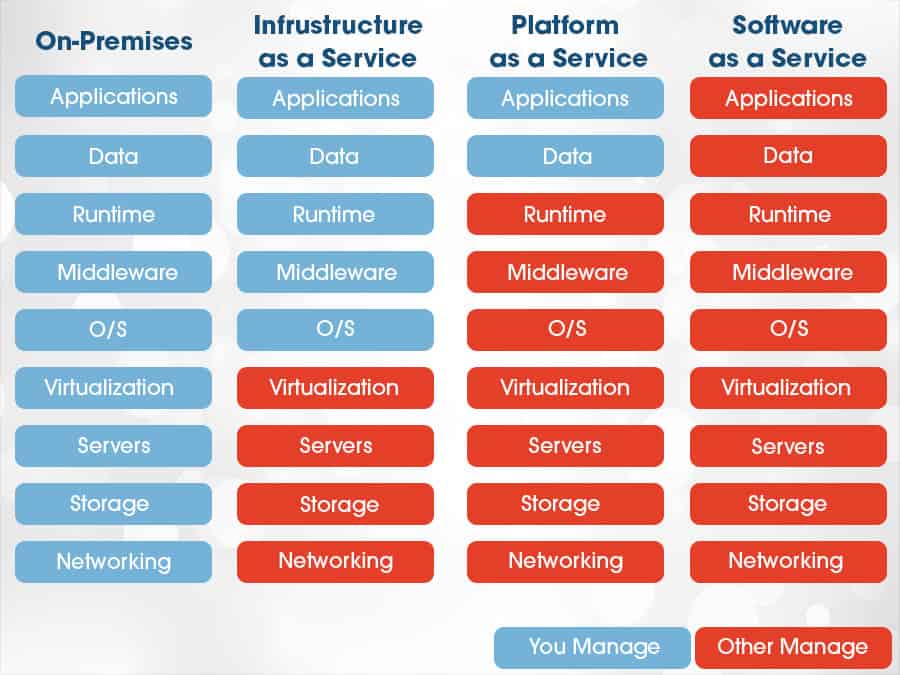Comprehensive Cloud Services: Boost Efficiency and Safety And Security for Your Firm
Wiki Article
Achieve Seamless Scalability With Cloud Services
In the ever-evolving landscape of cloud services, achieving seamless scalability stands as a keystone for modern-day companies looking for to remain adaptable and affordable. The pursuit for seamless scalability with cloud services unveils a world of possibilities for those eager to welcome the transformative power of dynamic resource administration.Benefits of Cloud Scalability
Cloud scalability provides organizations the adaptability to dynamically change resources based upon demand, ensuring ideal performance and price effectiveness. One essential benefit is the capability to range resources up or down promptly in reaction to changing work. This agility allows organizations to satisfy changing consumer requirements without over-provisioning sources, inevitably leading to set you back savings. Scalability additionally improves efficiency by making sure that systems can manage raised web traffic or workload without experiencing downtime or slowdowns. By successfully designating sources, companies can keep high levels of performance during peak times without unnecessary expenses throughout quieter durations. Furthermore, cloud scalability advertises advancement and trial and error by permitting businesses to quickly test originalities and scale them as needed. This versatility urges a culture of continuous enhancement and adaptation, enabling organizations to remain competitive in a rapidly developing market landscape. Eventually, the benefits of cloud scalability prolong past expense savings to incorporate better efficiency, agility, and development.Key Features for Scaling
Effective scaling in cloud services relies upon crucial features that allow organizations to readjust sources dynamically based upon need. One necessary function for scaling is flexibility, enabling sources to scale up or down in feedback to fluctuating work. This makes certain that companies can satisfy efficiency demands without over-provisioning resources. An additional essential feature is scalability, making it possible for systems to deal with enhanced workload by including sources effortlessly. This function is essential for suiting development without jeopardizing efficiency. Furthermore, automation plays an essential function in scaling by automating the provisioning and de-provisioning of sources based on predefined policies. Automation lowers human intervention, enhances efficiency, and guarantees rapid feedback to changing needs. Monitoring and analytics devices are likewise essential for scaling, giving understandings into resource utilization, performance metrics, and possible traffic jams. These devices allow companies to make enlightened choices and maximize source allocation for reliable scaling. Overall, these key attributes collectively empower organizations to accomplish smooth scalability in cloud services.Implementing Auto-Scaling Strategies
To properly enhance resource appropriation and adjust to differing workloads, organizations must strategically apply auto-scaling approaches in their cloud solutions framework. Auto-scaling enables systems to immediately adjust the number of calculate sources based on real-time need. There are different auto-scaling techniques that companies can utilize, such as predictive scaling, which makes use of historical data to anticipate future source demands, and responsive scaling, which responds to existing workload changes.
Ideal Practices for Scalability
For organizations intending to improve their scalability in cloud solutions, applying ideal methods is critical for ideal efficiency and source administration. One secret ideal technique is creating applications with a microservices design. This technique breaks down applications into smaller sized, independent solutions that can be released, upgraded, and scaled independently, enabling better adaptability and scalability.Another crucial technique is making use of containerization innovation, such as Docker or Kubernetes. Containers allow the packaging of applications and their dependences right into separated systems, making it much easier to scale elements separately and release them constantly across different environments.
Additionally, carrying out automated deployment and facilities as code (IaC) can streamline scalability efforts (linkdaddy cloud services). Automation devices like Terraform or Ansible help in provisioning and managing sources successfully, minimizing hand-operated errors and making it possible for rapid scalability
Moreover, keeping an eye on performance metrics, setting up signals, and carrying out regular capability planning are necessary practices to make certain proactive scalability administration. By sticking to these best practices, organizations can accomplish smooth scalability in their cloud solutions while optimizing performance and source usage.
Monitoring Efficiency Metrics
When evaluating the efficiency of cloud solutions scalability, very closely keeping track of efficiency metrics is essential for ensuring optimum functionality and source allowance. By constantly tracking essential efficiency indicators (KPIs) such as response times, resource, throughput, and latency use, organizations can acquire valuable insights into the wellness and effectiveness of their cloud facilities. Keeping an eye on performance metrics enables the early detection of potential traffic jams or issues that might influence scalability, making it possible for proactive actions to be required to resolve them prior to they escalate.

Verdict
In verdict, attaining smooth scalability with cloud solutions is essential for organizations to maximize efficiency, enhance advancement, and maintain high performance levels throughout peak times. By leveraging the advantages of cloud scalability, carrying out auto-scaling strategies, utilizing key attributes such as flexibility and automation, and following best methods like application style and performance monitoring, services can effectively scale their systems while making the most of resource usage and performance.The mission for seamless scalability with cloud services introduces a world of opportunities for those ready to accept the transformative power of vibrant source management.
Cloud scalability supplies organizations the adaptability to dynamically readjust sources based on need, guaranteeing optimum performance and price effectiveness. One more vital function is scalability, making it possible for systems to deal with boosted workload cloud services press release by adding sources flawlessly.For organizations intending to improve their scalability in cloud solutions, implementing finest practices is essential for optimum performance and resource monitoring.When analyzing the efficiency of cloud services scalability, very closely monitoring efficiency metrics is imperative for making certain optimal functionality and resource appropriation.
Report this wiki page